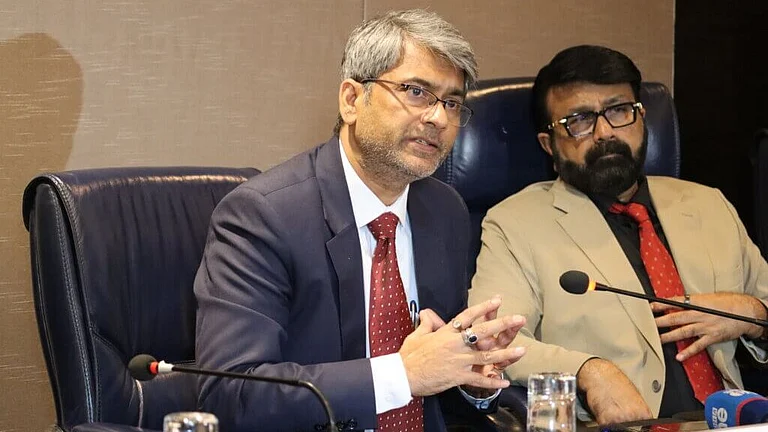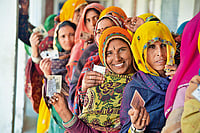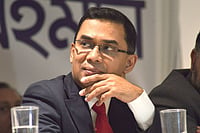What is packaged software? It is, typically, the word processing (Wordstar, Microsoft Word, WordPerfect) or spreadsheet (like Lotus 123 or Excel) software you use, or the MS-DOS that runs your PC, as opposed to customised software which is developed by consultants to cater to particular needs (for instance, the software Citibank uses to manage its credit card business). Packaged software is a mass product, with profits linked to volumes, while customised software is a one-off deal. Currently, software packages constitute barely 10 per cent of the total Indian software exports worth $485 million in 1994-95. Customised software accounts for the rest.
This is totally against the grain of international software trade, which comprises only $5 billion worth of customised software, and a whopping $65 billion of packaged software. A grim scenario for India, indeed. The only silver lining is that the country is ranked fifth in exports of customised software (marketshare: 9 per cent), after the US, Japan, Ireland and Germany. By the year 2000, India hopes to become the third largest exporter of customised software.
Why is India lagging behind in packaged software? Not because of lack of technology or software development acumen. The main reasons are marketing ability and expertise. Moreover, the risks in selling software packages is high, as returns on investment are not always assured. And Indian software companies, mostly small and medium-sized firms, cannot afford to take risks. Says Saurabh Srivastava, former chairman, Electronics and Computer Software Export Promotion Council and managing director of Delhi-based IIS Infotech Ltd: "Any domestic computer company would be able to develop Windows 95, but no Indian firm would have the wherewithal to market it."
Dewang Mehta, executive director, National Association of Software & Service Companies (NASSCOM), agrees. "The cost of marketing software products is immense—about 70 per cent of total costs," he points out. "You require a lot of upfront money."
To launch a product in the international market, a company needs a minimum of $1 million (Rs 3.5 crore), notes Phiroz Vandrevala, vice-president, Tata Consultancy Services (TCS), India's largest software exporter. As Indian software exporters are yet to hit the big time, raising so much money is no child's play. "Export of software packages sounds great, but there is no guarantee that the products will succeed in the international market," says Srivastava. In fact, in the software packages market the world over the success rate is rather low, he adds. Onthe other hand, V. Chandrasekaran, president of Bangalore-based Wipro Systems, points out that in customised software, the risks are practically nil.
But, nothing ventured, nothing gained. Unlike in customised software, in packages, the income is obviously in multiples of the number of units sold, says Chandrasekaran. Some Indian infotech firms have already begun venturing into the software products market. Though small, a definite beginning has been made.
Wipro's project management package, Instaplan, has achieved great success in the US and has been acknowledged as one of the best in the world, says Mehta. TCS' financial accounting package, E.X. (Everything Else is Complex), too, has achieved popularity both in the Indian and export markets. NIIT, a leader in the computer training industry, has developed a number of multimedia training solutions and computer-based training (CBT) packages. The Bombay-based Geometric Software Services has released impressive computer-aided design/computer-aided manufacturing (CAD/CAM) products. The Calcutta-based Vedika's financial accounting package, FACT, has made a dent in the Singapore market. ACT, the largest financial software products and services group in the world, chose IIS Infotech Ltd to develop its new range of products based on object-oriented programming techniques.
Chandrasekaran says that Wipro has already completed the groundwork for development of global software products. "We are watching the market and will make a big splash when the time is ripe," he says. The niche areas that his company will concentrate on include Internet-related products as well as conversion packages and products to enhance corporate productivity.
Software packages constitute a marginal share of TCS' Rs 286-crore worth of exports. Within the next three to five years, however, they will comprise 20 to 30 per cent, predicts Vandrevala. Adds Lal C. Singh, the company's Bombay-based executive vice-president, marketing: "We are already positioned for take-off in software packages."
In October, the company launched in the domestic market, R two, a pro-active intelligent information software package to enable executives to make fast, accurate and quality decisions. The product is now all set for a worldwide launch, informs Singh. In June, TCS will launch in Europe, Quartz, a high-end banking software package, aimed at investment banking. Around the same time, the company will unveil an integrated package to cater to the American apparel industry. The product will aid the textile and leather garment industry in designing, dress-making, production and sales.
SINGH says E.X. has been redeveloped on the Windows 95 platform for sale in the domestic as well as European and Asia-Pacific markets. It will now be a totally new product. Disclosing details on the money spent on development of the new products, Singh says the opportunity costs for Quartz was $15 million, $3.5 million for the apparel package, and $2.25 million for Rtwo. Says Nandan Nilekani, deputy managing director of the B a n g a l o re - b a s e d Infosys Technologies Ltd, the fifth-largest software exporter: "Eighty-five per cent of our company's export revenue of Rs 50.96 crore in 1994-95 came from customised software. Our target is to increase the share of product exports to 20 per cent in 1995-96 to reach 40 per cent by the turn of the century." The company exports packages for banking as well as inventory control and warehouse management.
Dilip Londhe, general manager of the Bombay-based Silverline Industries Ltd which ranked fourth in software exports in 1994-95, says his company has developed software packages for the hotel industry. However, customised software constituted 88 per cent of export earnings, with there maining 12 per cent coming from packages. "We hope to consolidate our position in software packages and increase its share to 18 per cent in a year or two," he adds.
There are several problems that Indian companies will have to sort out before they can make a success of software package exports. Firstly, unlike developed countries, packages cannot be first developed in the home country and then replicated abroad, points out Srivastava. For instance, packages for banking and inventory control in a developing country like India and developed countries like the US are different, because of the wide gap in the levels of automation between the two countries, varying volume of transactions and business as well as a different set of government regulations.
But the single biggest issue confronting the software industry is India's credibility, says Srivastava. There is no short cut to creating brand names for Indian software products, he observes. Singh claims that E.X. is the only real international brand that India has produced so far. "To catapult India into the world software products arena, there should be at least one brand coming from our shores every year," he says. This is the best, and only way for India to develop brand equity for its software packages.
NASSCOM's Mehta is upbeat about Indian software product exports. He says that by the turn of the century, India will be "well-positioned in the software products market". Seventy-eight Indian companies are trying to develop core competence in soft -ware packages. Even if 10 per cent of them succeed, it would help India make its presence felt in software product exports. By the year 2000, Indian software exports are projected to grow to $2.5 billion, of which 40 per cent would comprise packages, says Mehta. The veracity of that forecast will depend on the resilience and ingenuity of the Indian softcorps.


























